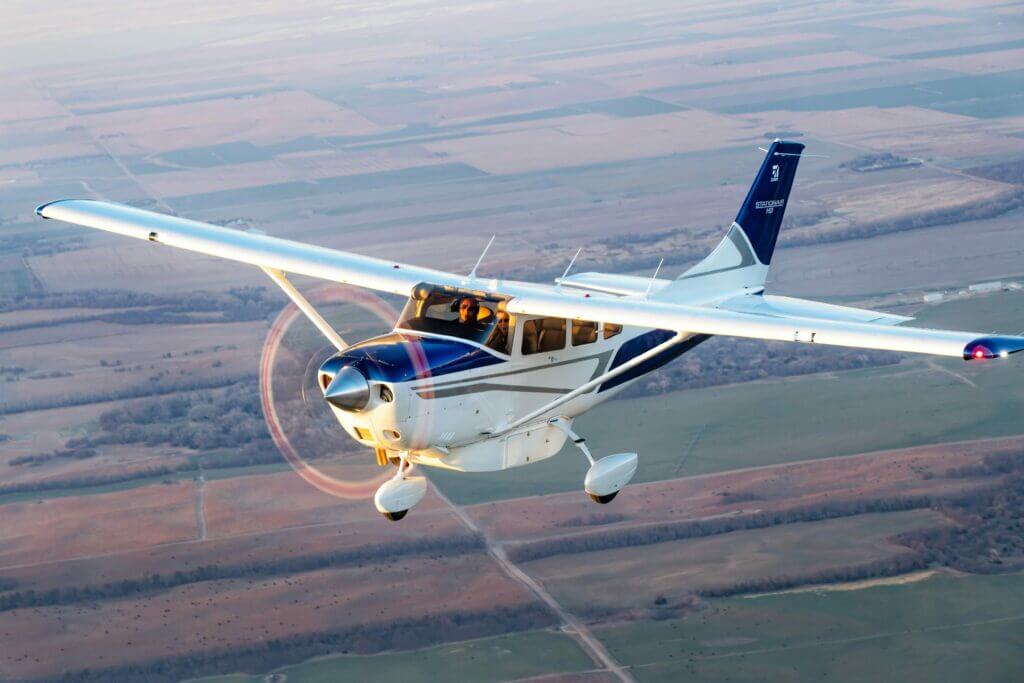CESSNA

Offered by Textron as the epitome of versatility, the Cessna Stationair HD has maintained a comfortable position in the market for several decades. It is one of the few single-engine piston aircraft capable of being converted to a freighter, combi or to operate in the standard six-seat configuration.
Today, the CE-T206H Turbo Stationair is the official name of the Cessna 206, which has had many commercial names over the course of six decades, including Super Skywagon, Skywagon and Super Skylane, depending on the version and the time of launch. Regardless of the nomenclature over the years, one thing has never changed: its good capacity and flexibility.
Originally launched as the Cessna 205, the model was basically a six-seat, fixed-landing-gear version of the already successful Cessna 210. At the time of its design, the aircraft was designated the Model 210-5, as it inherited much of its older brother's design.
Originally equipped with a 260 hp Continental IO-470-S engine, the Cessna 205 produced an impressive 576 units in just two years, between 1963 and 1964. Its large capacity, at the time rivaling that of several single-engine aircraft, stood out for its ability to transport small volumes, something essential in several markets, including the United States.

In the 1960s, general aviation was experiencing its Golden Age, with the growing popularity of private air transport and the use of airplanes as extensions of family cars, especially the large station wagons of the time. The aircraft was subsequently renamed the Model 206, and was produced between 1964 and 1986. Production ended solely because US laws made the commercialization of light aircraft unfeasible due to the risk of billion-dollar lawsuits.
With the change in the rules, the 206 returned to production precisely because of the demand for a flexible model, with a maximum takeoff weight of around 1,500 kilos and the ability to operate on very short runways, taking off in up to 600 meters, on average. The most recent version, marketed under the name Cessna Turbo Stationair HD, maintained the essence of the original design, with simple and robust solutions, but adding some improvements and comfort items.
As expected, over the last two decades, part of the modernizations were related to the avionics, with the glass cockpit concept replacing the classic analog dials. The update to the Garmin G1000 suite was natural, following the standardization existing in the Cessna propeller-driven model line, including the Caravan. More recently, the suite was updated to the Garmin G1000 NXi, including the Garmin GI 275 standby, which maintains safety and ease of use, in addition to a modern look on board.
In addition, it maintains the following standard features as standard: ADS-B Out and In; Garmin GFC-700 autopilot, with Electronic Stability Protection (ESP) and Low Speed Protection (USP); Ability to display high and low altitude VFR and IFR charts on the screens – including night mode; Wireless upload of database and flight plan; Vertical Situation Display and visual approach selection mode.
While maintaining the simple and robust interior, Cessna recently began offering an update to the interior finish and design, with more comfortable seats and a contemporary look – as far as possible for an aircraft whose design continues to focus on simplicity. Still, it now includes USB sockets, cell phone pockets in each seat, new headset plugs and a thankfully redesigned armrest. However, the integrated air conditioning remains optional.
The Cessna 206 is offered in two versions: Turbo Stationair HD, with six standard seats; Turbo Stationair HD Utility, which, as the name suggests, is the utility version, with only the pilot's seat and floor adapted for transporting small loads.
Basically, the changes are related to the load capacity: Turbo Stationair HD: maximum useful load of 654 kilos, with a maximum paid load of 560 kilos; Utility: maximum useful load of 723 kilos, with a maximum paid load of 630 kilos.The other parameters are exactly the same, including the 310 hp Lycoming TIO-540-AJ1A engine, equipped with McCauley three-blade propellers.
Good numbers even after 60 years...Even after more than 60 years of the initial design, the good numbers for operation on short and unprepared runways still attract attention, such as a declared takeoff distance of 600 meters, with 425 meters of runway required for landing. Of course, the real value can vary considerably depending on the situation, but the reference numbers continue to demonstrate the good capacity of the Cessna 206.
With the end of production of the Piper Seneca, the Turbo Stationair became, along with the Beech Baron, one of the only low-cost options with the capacity to operate on short runways for those who need a light aircraft with good cargo capacity.
In some cases, the Turbo Stationair offers a higher payload than the Seneca V, with a payload up to 30 kilos greater. Of course, these are different aircraft with different purposes, but this proves that the Cessna 206 can operate in many of the same traditional scenarios as the Seneca V and the Beechcraft G58 Baron. The latter has a maximum declared payload of 651 kilograms, slightly higher than that of the Cessna 206.
Vivaero

Comments
Post a Comment